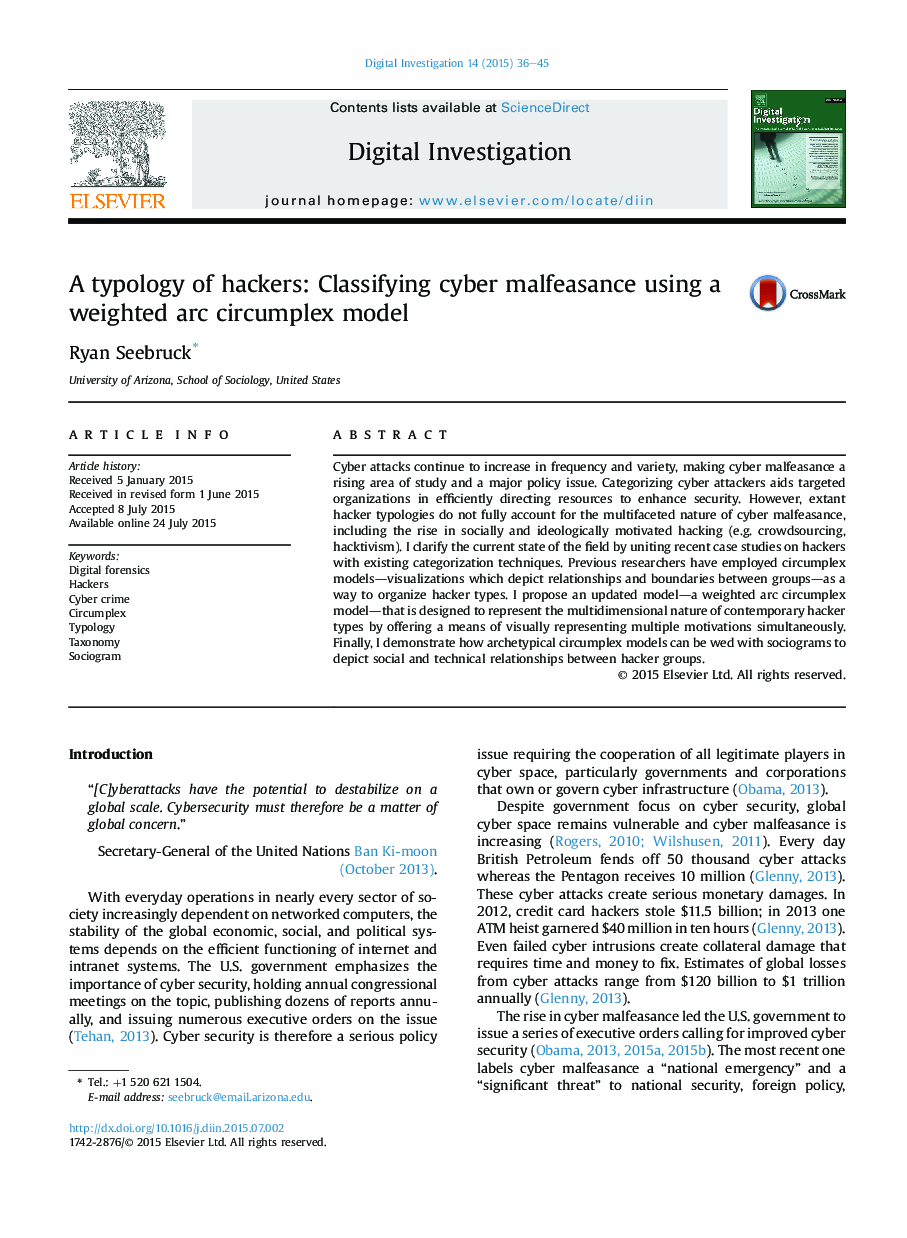| Article ID | Journal | Published Year | Pages | File Type |
|---|---|---|---|---|
| 456269 | Digital Investigation | 2015 | 10 Pages |
Cyber attacks continue to increase in frequency and variety, making cyber malfeasance a rising area of study and a major policy issue. Categorizing cyber attackers aids targeted organizations in efficiently directing resources to enhance security. However, extant hacker typologies do not fully account for the multifaceted nature of cyber malfeasance, including the rise in socially and ideologically motivated hacking (e.g. crowdsourcing, hacktivism). I clarify the current state of the field by uniting recent case studies on hackers with existing categorization techniques. Previous researchers have employed circumplex models—visualizations which depict relationships and boundaries between groups—as a way to organize hacker types. I propose an updated model—a weighted arc circumplex model—that is designed to represent the multidimensional nature of contemporary hacker types by offering a means of visually representing multiple motivations simultaneously. Finally, I demonstrate how archetypical circumplex models can be wed with sociograms to depict social and technical relationships between hacker groups.
